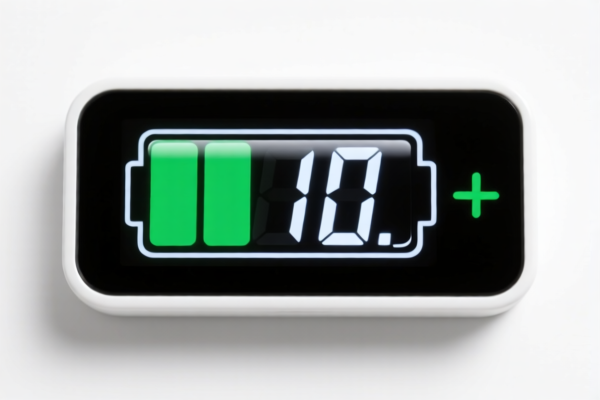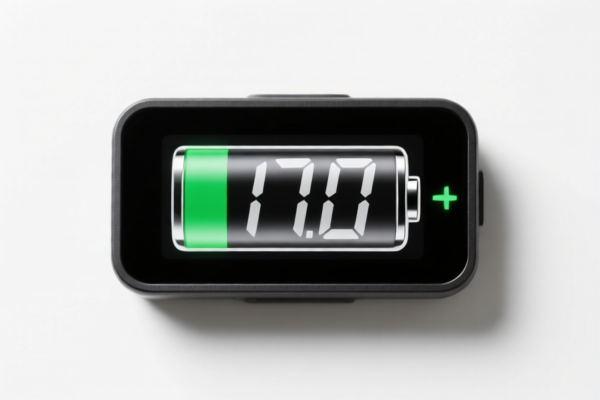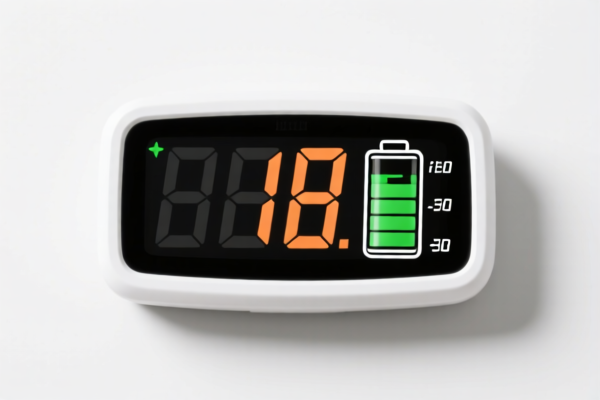| HS Code | Official Doc | Tariff Rate | Origin | Destination | Effective Date |
|---|---|---|---|---|---|
| 8537109170 | Doc | 57.7% | CN | US | 2025-05-12 |
| 8537109150 | Doc | 57.7% | CN | US | 2025-05-12 |
| 8543709860 | Doc | 57.6% | CN | US | 2025-05-12 |
| 8543906500 | Doc | 55.0% | CN | US | 2025-05-12 |
| 9106906500 | Doc | 15¢ each + 2.3% + 0.8¢/jewel+55.0% | CN | US | 2025-05-12 |
| 9105995000 | Doc | 7.5¢ each + 3.2%+30.0% | CN | US | 2025-05-12 |
| 9105996000 | Doc | 23¢ each + 3.2%+37.5% | CN | US | 2025-05-12 |




Battery Monitor
A battery monitor is a device used to display the state of charge (SOC) and other information regarding a battery or battery bank. They are commonly used in applications with rechargeable batteries, providing crucial data for efficient operation and prolonging battery life.
Material
Battery monitors themselves are comprised of several components, typically including:
- Enclosure: Often plastic or metal, providing protection for internal circuitry.
- Microcontroller/Processor: The core of the device, handling data acquisition and calculations.
- Current Shunt: A low-resistance resistor used to measure current flow. Higher quality monitors use more precise shunts.
- Voltage Sensors: Measure battery voltage.
- Display: LCD, LED, or a connection port for data output to a computer or mobile device.
- Communication Interface: Bluetooth, USB, RS232, or other protocols for data logging and control.
Purpose
The primary purpose of a battery monitor is to provide accurate information about a battery's condition, including:
- State of Charge (SOC): Percentage of remaining battery capacity.
- Voltage: Indicates the battery's health and charging status.
- Current: Shows the rate of charge or discharge.
- Ampere-Hours (Ah) Consumed/Remaining: Total capacity used or available.
- Power (Watts): Instantaneous power draw or generation.
- Time to Empty/Charge: Estimated time based on current draw/charge rate.
- Temperature: Some monitors include temperature sensors to track battery temperature, which is critical for safety and performance.
Function
Battery monitors function by:
- Voltage Measurement: Continuously monitoring the battery voltage.
- Current Measurement: Measuring the current flowing into or out of the battery using a shunt resistor. The voltage drop across the shunt is measured and converted to current.
- Data Processing: The microcontroller uses algorithms (often the Coulomb counting method) to integrate current flow over time to calculate the remaining battery capacity (Ah).
- SOC Calculation: Algorithms estimate the State of Charge based on the calculated Ah remaining and battery characteristics.
- Display/Output: The information is displayed on a screen or transmitted to another device for logging and analysis.
Usage Scenarios
Battery monitors are used in a wide variety of applications:
- RV/Marine: Monitoring house batteries, starter batteries, and generator charging.
- Solar Power Systems: Tracking battery SOC, optimizing charging, and preventing over-discharge.
- Electric Vehicles (EVs): Displaying battery level and range.
- Backup Power Systems (UPS): Monitoring battery health and providing alerts.
- Golf Carts: Tracking battery usage and range.
- DIY Projects: Used in robotics, electronics, and other applications requiring battery management.
- Scientific Research: Data logging and analysis of battery performance.
Common Types
- Shunt-Based Monitors: The most accurate type, using a current shunt to measure current flow. Require installation of a shunt resistor in the battery circuit.
- Non-Shunt Monitors: Estimate current based on voltage and other parameters. Less accurate than shunt-based monitors but easier to install.
- Standalone Monitors: Dedicated devices with a display and basic functionality.
- Integrated Monitors: Built into battery chargers, inverters, or other devices.
- Bluetooth Monitors: Connect to smartphones or tablets for remote monitoring and data logging.
- Smart Battery Monitors: Advanced features such as remote control, alarm notifications, and data analytics.
Based on the provided information, a battery monitor can be classified under several HS codes, depending on its specific features and functions. Here's a breakdown of potential classifications:
-
8543709860: Electrical machines and apparatus, having individual functions, not specified or included elsewhere in this chapter; parts thereof: Other machines and apparatus: Other: Other. This code covers a broad range of electrical machines with individual functions not specifically categorized elsewhere. A battery monitor, if considered a standalone machine for measuring electrical parameters, could fall under this category.
- Chapter 85: Electrical machinery and equipment.
- Heading 8543: Electrical machines and apparatus, having individual functions, not specified or included elsewhere in this chapter.
- Subheading 8543.70: Other machines and apparatus.
- Subheading 8543.70.98: Other.
-
9106906500: Time of day recording apparatus and apparatus for measuring, recording or otherwise indicating intervals of time, with clock or watch movement or with synchronous motor (for example, time registers, time-recorders): Other: Other: Apparatus for measuring, recording, or otherwise indicating intervals of time, with clock or watch movements, battery powered: Other. If the battery monitor includes time-related functions (e.g., logging data over time), and is battery powered, this code may be applicable.
- Chapter 91: Measuring, checking, testing, navigating and similar instruments and apparatus.
- Heading 9106: Time of day recording apparatus and apparatus for measuring, recording or otherwise indicating intervals of time.
- Subheading 9106.90: Other.
- Subheading 9106.90.65: Apparatus for measuring, recording, or otherwise indicating intervals of time, with clock or watch movements, battery powered.
-
8537109170: Boards, panels, consoles, desks, cabinets and other bases, equipped with two or more apparatus of heading 8535 or 8536, for electric control or the distribution of electricity, including those incorporating instruments or apparatus of chapter 90, and numerical control apparatus, other than switching apparatus of heading 8517: For a voltage not exceeding 1,000 V: Other: Other. If the battery monitor is integrated into a panel or console with other electrical components, this code might be relevant.
- Chapter 85: Electrical machinery and equipment.
- Heading 8537: Boards, panels, consoles, desks, cabinets and other bases, equipped with two or more apparatus.
- Subheading 8537.10: For a voltage not exceeding 1,000 V.
- Subheading 8537.10.91: Other.
Regarding HS code 9106906500, please note the tariff includes a base duty of 15¢ each + 2.3% + 0.8¢/jewel, plus additional duties.
Customer Reviews
No reviews yet.